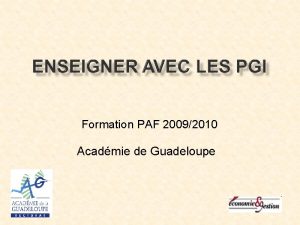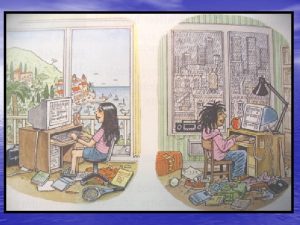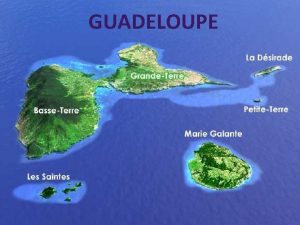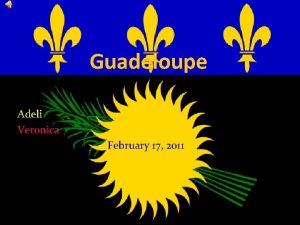GUADELOUPE Located in the Leeward Islands part of





- Slides: 5

GUADELOUPE

• Located in the Leeward Islands, part of the Lesser Antilles in the Caribbean. • It has a land area of 1, 628 square kilometres (629 square miles) and an estimated population of around 400, 132

• The regional capital of Guadeloupe is the city of Basse-Terre, which lies on the island of the same name. • The official language is French, but Antillean Creole is spoken virtually by the entire population except recent arrivals from metropolitan France. Basse-Terre

• Guadeloupe is an overseas department and region of France. • It had almost the same political status as metropolitan departments, although special constitutional provisions allow them greater autonomy and they are excluded from certain domestic statistics, such as the unemployment rate. • As integral parts of France and the European Union, overseas departments are represented in the National Assembly, Senate, and Economic and Social Council, vote to elect members of the European Parliament (MEP), and also use the euro as their currency. • It is one of five overseas departments of France.

Interesting Fact The famous dance of the island is called the biguine, which is still performed in colourful Creole dress. There are two types: 1) The drum biguine, or bidgin bèlè in Creole Comes from a series of bèlè dances performed since early colonial times by the slaves who inhabited the great sugar plantations. 2) Orchestrated biguine By combining the traditional bèlè music with the European dance genres, the black musicians of Martinique and Guadeloupe created the biguine. n the 1930 s several biguine artists from Martinique and Guadeloupe moved to mainland France, where they achieved great popularity in Paris, especially in the wake of the colonial exhibition in 1931. Dance group called “Viré Gadé” revives the beguine dance in 2015









